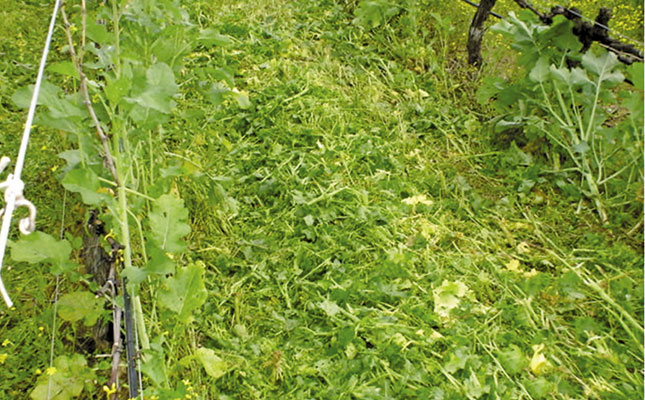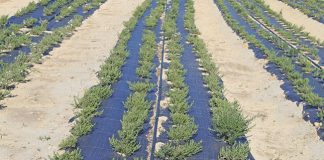
Problems with root rot nematode (Meloidogyne javanica) and ring nematode (Criconemoides xenoplax) on vegetable, fruit, wine and grain farms have escalated in recent years, according to Niel Kruger, marketing manager at crop-solutions company Terason.
Farming margins have become so narrow over the past decade that farmers can no longer afford to break the disease cycle by letting land lie fallow, and there is only a limited selection of crops available for rotation purposes. In the past, these nematodes were controlled with methyl bromide. However, with the phasing out of this highly toxic chemical, other products must be used in its place. These products are varied, but all are expensive.
In addition, explains Kruger, there is growing concern that continual application might lead to resistance developing in the nematodes, and increasing consumer awareness and concern about the environment has led to a move away from synthetic chemicals towards integrated pest management.
Effective biofumigation
Healthy soil has a balance between micro-organisms. It will contain both beneficial and pathogenic nematodes (which are host-specific), and other organisms keep the pathogenic nematode population in check. When choosing a biofumigation crop, the type and concentration of glucosinolates (GSL) present in its plant cells should be considered, says Kruger.
The specific GSL gives an indication of the type and concentration of isothiocyanate (ITC) expected to be released when the plant cells are ruptured and the reaction between GSL and the enzyme myrosinase (MYR) takes place. The active ingredient ITC is postulated to play the major role in suppressing soil-borne problems (weeds, diseases, nematodes) in the biofumigation process.
Glucosinolates are present in high concentrations in most brassica species. For active biofumigation, the species must be carefully selected to get the most active GSL present in the cells. The ITC and other secondary metabolites give mustard its strong taste and rocket its pungent smell when cells are ruptured.
A recent study by Stellenbosch University and the Agricultural Research Centre-Infruitec-Nietvoorbij supports the view that in addition to the formation of ITC during biofumigation, other factors also have an impact on soil-borne menaces. These include the crop host status and the secondary impact of green manure on the biodiversity in the soil.
Kruger, a participant in the study, told delegates at a recent VinPro workshop in Paarl that using a biofumigation crop might never be as effective in managing plant parasitic nematodes as synthetic fumigants and nematicides. That said, the answer lies in integrating biofumigation in a responsible and holistic approach to manage plant parasitic nematodes, including chemical, biological and cultural means. A biofumigation crop can be included in the rotation programme just before planting an annual or perennial crop, or as a cover crop in an existing vineyard or orchard.
A properly established biofumigation crop can compete with actively growing weeds, suppressing their growth. Its root system can also have a beneficial impact on the soil structure and add to its organic content. The root systems of biofumigation species differ, ranging from the deep taproot systems of caliente, white mustard and canola, to the more fibrous root system of nemat. These root systems can have a beneficial long-term effect on overall soil health and the rhizosphere of the existing main crop or follow-up crop, Kruger explained.
The research
As part of his masters thesis at Stellenbosch University, Kruger has been researching the biofumigation potential of different cover crops to suppress root-knot nematode and ring nematodes in vineyards. He used oats (Avena sativa cv. Pallinup), white mustard (Sinapis alba cv. Braco), canola (Brassica napus cv. AV Jade), Caliente 199 (Brassica juncea cv. Caliente 199) and nemat (Eruca sativa cv. Nemat). The field study was part of a long-term project by the Agricultural Research Centre-Infruitec-Nietvoorbij under the supervision of Dr Johan Fourie of Infruitec-Nietvoorbij.
Kruger conducted three separate trials:
Bioassays: Biofumigation was performed under controlled conditions. In the first bioassay, Caliente 199, white mustard and nemat used as biofumigation crops resulted in significantly fewer galls in root-knot-susceptible tomato plants planted in soil inoculated with root-knot nematode than in the canola and the control plots. The results were less promising in the bioassay with ring nematodes, with no significant differences between the various treatments. Kruger thinks that the future control of ring nematode may be a greater challenge than the control of root-knot nematode.
Crop host trials
These determined the host status of the cover crops for root-knot and ring nematodes. Nemat was the least susceptible host for root-knot nematode, followed by oats. This indicated that these two crops are seen as poor hosts for root-knot nematode. Canola was the poorest host for ring nematode, while most other crops were also poor hosts. In contrast the ring nematode population increased in tomatoes. Nemat did less well than the other crops, but the ring nematode population was still lower than in tomatoes.
Field trials
The three-year field trials focused on ring nematode. Cover crops were planted in a vineyard for three consecutive seasons to determine the impact on plant-parasitic nematodes.The cover crops consistently reduced the ring nematode population over the three years in which canola and Caliente 199 were planted. This was also the case for the total parasitic nematode population over time (see figure 1).
The results were obtained in the treatment in which the cover crop was not mechanically incorporated into the soil, but chemically controlled at bud break. This indicated that the main result was not due to biofumigation, but to the crop host impact on the ring nematode population over time.
According to Kruger, progress can still be made in improving the effectiveness of biofumigants, especially in South Africa.
“For optimal biofumigation, many factors must be considered. These include the aim of the planned biofumigation, the biofumigation species involved, biomass production, the maceration process, the incorporation process and the moisture content of the soil before biofumigation. The more efficient these practices, the better the results that can be expected,” he explains.
Considerable research has been carried out on various brassica species to find out the most effective GSL and ITC reaction during maceration, and the most effective way of working the plants into the soil to produce the best biofumigating effect. Researchers will share their findings at the International Biofumigation Symposium in Stellenbosch in July 2016.
Phone Niel Kruger on 021 873 6177 or email him at [email protected].













